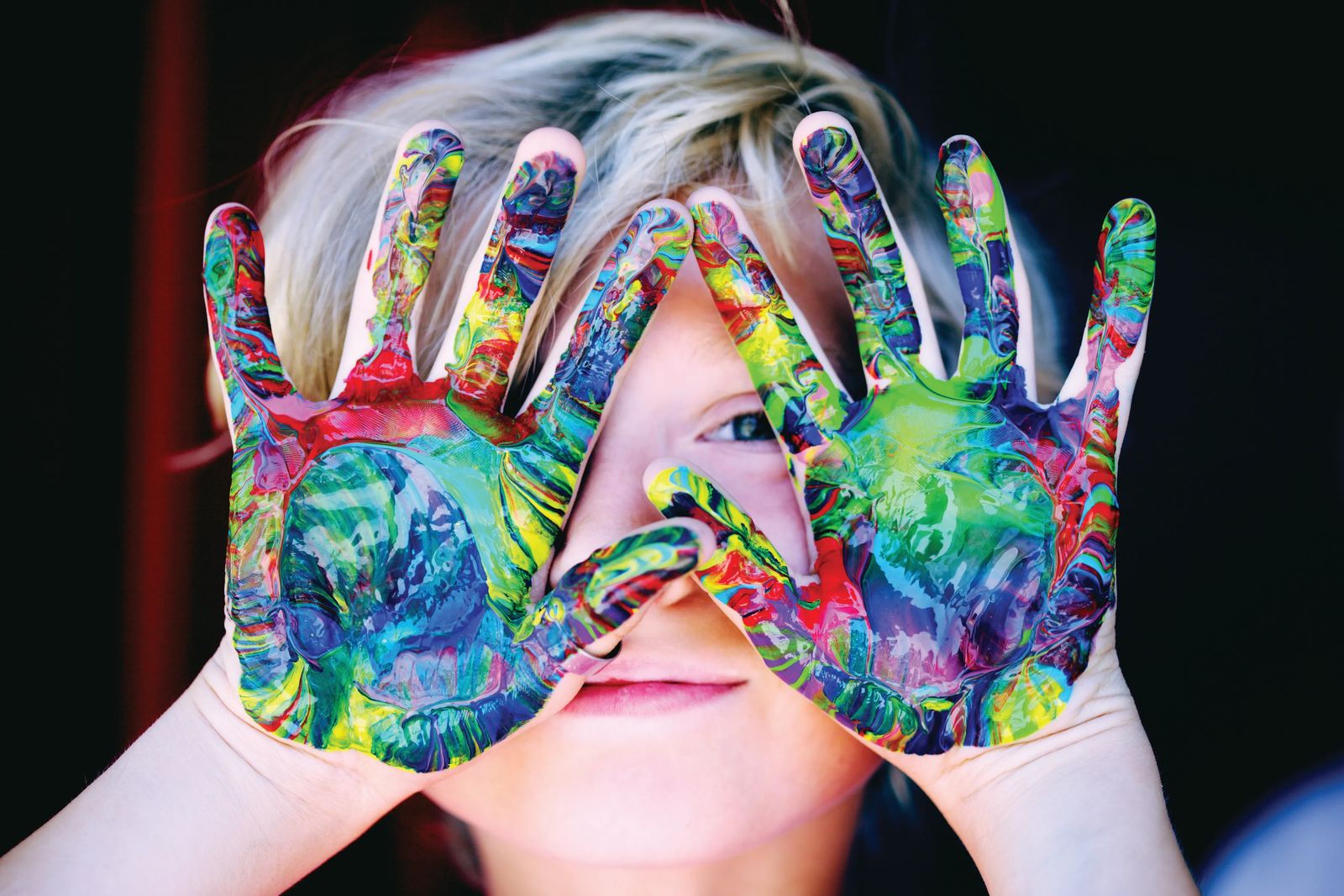
Left-Brained Kids Need the Arts
February 1, 2020 | by ashlynn reynolds-dyk
“Art is an experience, not an object.” ~Robert Motherwell
“Art is science made clear.” ~Jean Cocteau
“Art isn’t everything. It’s just about everything.” ~Gertrude Stein
Although no one exclusively uses the left or right side of their brain, humans do exhibit brain lateralization tendencies, according to Dr. Kathleen Berger, who studies human development. The theory is that people are left-brained or right-brained, meaning that one side of their brain is dominant where certain characteristics are associated with each side. If a person is mostly analytical and methodical in their thinking (often having an aptitude for math or science), they are said to be left-brained. In contrast, a person who tends to be more intuitive and creative is thought to be right-brained.
With school curriculums and pedagogy prioritizing common core subjects, the importance of exposing children to arts can be overlooked. This is a great disservice for both right- and left-brain dominant children since art - be it visual, performing, or music - fosters innovation, helps to understand the big picture, and enhances learning in math, science, reading, and more. After all, it was Albert Einstein, who said, "The greatest scientists are artists as well." and “Imagination is more important than knowledge.” A genius and one of the greatest physicists of all time, Einstein explained that his insight did not come from logic or mathematics but rather from intuition and inspiration—two characteristics fostered in large part, through art.
With that in mind, parents can think about the benefits of integrating art into the lives of not just our right-brained children but also our left-brained children. Perhaps the most apparent benefit of exposing all children to art is that it offers them an alternate mode of self-expression. Children do not always have the vocabulary (toddlers?) or confidence (preteens, teens?) to express themselves, but sometimes a picture or performance can offer them an avenue of communication. In addition, from finger painting to holding a crayon to holding a paintbrush, exposure to art assists young children with motor development, language skills, and social skills.
As children grow older and exposure to the arts continues, children gain experience in decision-making, risk-taking, and inventiveness. Zack Terakedis, the owner of Terakedis Fine Art, explains that children are allowed to make mistakes, learn from those mistakes, and freely make changes in art, which is not always the case with math and reading. This leads to higher thinking where children of all ages become divergent thinkers, creative problem-solvers, and astute observers. Older children - preteens and teens especially - also gain a better understanding of their history, culture, and the wider world.
Additionally, using art to teach math, science, or reading can make these subjects more accessible by presenting difficult concepts visually or spatially; children can listen to music, watch dance, or see art to learn about principles of math, science, or reading. Similarly, they can use rhythm to understand math better, and they can use paint composition (e.g., acrylic vs. oil—and which will get you the results you want) to understand science better. This can also be a means to engage children that may not otherwise be engaged - it can be especially helpful for kinesthetic and/or hands-on types of learners. Finally, using art as a way to teach other subjects can reinforce and strengthen a child’s understanding of principles already taught. Teaching the same concept using multiple methods solidifies neural pathways and networks (Berger), so children better understand and are less likely to forget information.
Practical Ways to Expose Your Children to the Arts
To expose your left-brained (and even your right-brained) child to the arts outside of school, there are some things you can do both at home and outside of the home. First, I suggest seeing what programs are offered from your child’s school outside of the regular curriculum - is there an art club they can join? If this is not an option or if you are looking for more, the Yellowstone Art Museum offers an art education program for children. This includes on-site education with tours, classes, and camps; family art-making (FAM at the YAM); a teen program (YAM Teens); and the Young Artists’ Gallery. Additionally, many local art studios - Yellowstone Coffee and Canvas, Bitterroot Sip and Paint, Crooked Line Studio, and The Front Porch - offer classes, activities, events, and even host parties for children.
To expose your children to more performing or music arts, the NOVA Center for the Performing Arts offers classes and other opportunities for children ages 5 to 18. Billings Studio Theatre also offers various camps and productions through their Growing Stage program for youth. You might also attend a performance by the Billings Symphony and keep an eye on events held at Alberta Bair Theater, Billings Studio Theatre, NOVA Center for Performing Arts, MetraPark, Rocky Mountain College, and Montana State University-Billings. There are also numerous people and organizations locally that offer private instrument and voice lessons. Additionally, Billings is lucky to be home to a variety of dance studios, programs, and companies, which include recreational and competitive opportunities.
At home, you can expose your children to arts by actively seeking contests - local, regional, and statewide. Encourage your children to enter art, dance, or similar kinds of competitions. For example, my children’s PTA sponsors a Reflections contest, which includes different arts categories (choreography, photography, visual arts, cinematography, etc.) for children to enter their projects/products. You can also help your children work on art projects throughout the year to enter at MontanaFair. I suggest keeping an art box and purchasing supplies whenever you can catch a sale at places like Michael’s. Children often like to work with different textures like play-doh, playfoam, and kinetic sand (sculpting for toddlers and younger children) moving into different textured canvas or paper and varying types of ink or paint for older children. For those looking for less messy ways to expose kids to art at home, try some basic photo editing apps! It is my experience that children have quite a bit of fun with these; they are a great way to introduce kids ages 5 and up to art and also to get kids to experiment. For those less interested in the visual arts, plan weekly family dance, singing, or instrument performances at home.
- A report by Americans for the Arts states that young people who participate regularly in the arts (three hours a day for three days each week through one full year) are four times more likely to be recognized for academic achievement, to participate in a math and science fair, or to win an award for writing an essay or poem than children who do not participate.
- Art is not, as the metaphysicians say, the manifestation of some mysterious idea of beauty or God; it is not, as the aesthetical physiologists say, a game in which man lets off his excess of stored-up energy; it is not the expression of man’s emotions by external signs; it is not the production of pleasing objects; and, above all, it is not pleasure; but it is a means of union among men, joining them together in the same feelings, and indispensable for the life and progress toward well-being of individuals and of humanity. ~Leo Tolstoy
- Interesting Facts:
- Albert Einstein was a pianist and violinist.
- Samuel Morse (inventor of the telegraph and Morse code) was a painter.
4. Famous people thought to be right-brained include:
- Bill Gates
- Abraham Lincoln
- Aristotle
- Sir Isaac Newton
- Thomas Alva Edison
- Galileo Galilei
- Benjamin Franklin
- Steven Spielberg
- Alexander Graham Bell
- Thomas Jefferson
Originally printed in the February 2020 issue of Simply Local Magazine
Never miss an issue, check out SLM's digital editions here!





